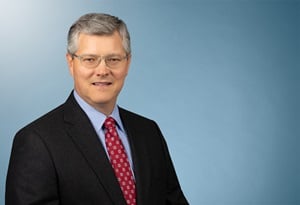Faegre & Benson Wins Patent Appeal for Saunders Group
Faegre & Benson LLP's intellectual property practice obtained a victory in the U.S. Court of Appeals for the Federal Circuit for its client The Saunders Group, Inc., in a complex patent infringement suit involving difficult patent claim construction issues in the design of cervical traction products. The precedential June 27 decision reinforces the firm's standing as a premier national firm for the prosecution and defense of patent litigation involving sophisticated medical devices and high-tech products and services.
Two years ago, Saunders filed a patent infringement suit in federal court in Virginia alleging that cervical traction products sold by ComforTrac, Inc. and Care Rehab & Orthopaedic Products, Inc. infringed Saunders' patent for the products, U.S. Patent No. 6,899,690. The U.S. District Court for the Eastern District of Virginia construed the claims of the '690 patent narrowly and, based on its claim construction, the district court granted summary judgment of non-infringement.
With the help of Faegre & Benson's IP team, Saunders appealed the district court's decision to the U.S. Court of Appeals for the Federal Circuit. On June 27, the federal circuit reversed the district court's decision and found that Saunders' patent rights were broader than what the district court had found. The appeal involved a collision of myriad claim construction issues that the federal circuit considered "difficult," resulting in a decision "not easily" reached.
Decision Addresses Key Claim Construction Issues
In making its decision, the federal circuit provided a precedent-setting discussion of a number of key claim construction principles. The federal circuit discussed when the specification can be limiting, the application of claim differentiation, the importance of a change in claim limitations in a continuation application, the role of a petition to make special during prosecution, when a parent's prosecution history can limit the claims of a continuation patent, and the application of a validity maxim for claim construction. In its decision, the federal circuit "concluded that the change in claim language between the [parent] patent and the '690 patent, and in particular the inclusion of the ‘pressure activated seal' limitation in some claims and its omission from others, is a sufficiently powerful indicator as to the proper construction of the asserted claims that it outweighs the portions of the specification in which the invention is described narrowly." The case was remanded to the district court for further proceedings.
William L. Roberts, a lead litigation partner in Faegre & Benson's Minneapolis office, argued the appeal on behalf of The Saunders Group. With him on the brief were Calvin L. Litsey, Chad Drown and Timothy E. Grimsrud.
Karl G. Schwappach, a patent partner in Faegre & Benson's Minneapolis office, prosecuted the '690 patent on behalf of The Saunders Group.
The June 27 decision has been published as: The Saunders Group, Inc. v. ComforTrac, Inc. and Care Rehab & Orthopaedic Products, Inc., No. 06-1576, --F.3d--, 2007 WL 1827843 (Fed. Cir. June 27, 2007).


